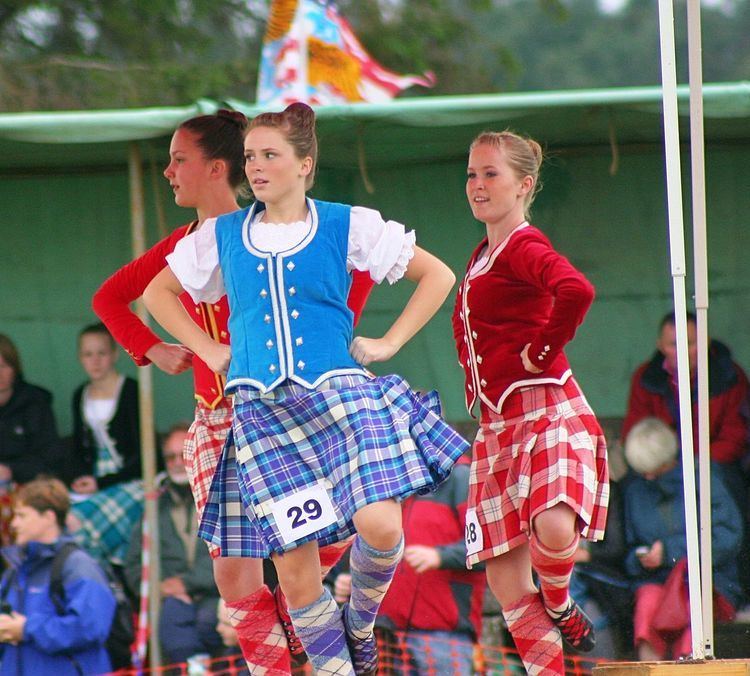Year 1805 | ||
 | ||
Genre Scottish highland dance | ||
The Earl of Erroll is a Scottish highland dance sometimes danced today at Highland games around the world, as part of Scottish National dances repertoire. It is danced to two slow reels (4/4), Earl of Erroll and the 23rd Countess of Erroll.
The dance takes its name from James Hay, 15th Earl of Erroll, for whom it was choreographed by Francis Peacock. It was originally performed in hard shoes. The dance came back to the repertoire of Scottish dancers after it was published in 1953 by Mrs Isobel (Tibbie) Cramb, with reference to Frederick Hill's Manuscript (1841) and Miss Cruickshank of Aberdeen. It is still seen as a soft balletic Scottish step dance by RSCDS teachers The Earl of Erroll is considered one of the hardest national dances to perform well.
A Scottish country dance of a somewhat similar name, Earl of Errol's Reel, is performed in groups of 6 dancers (3-couple sets) as part of Scottish country dancing repertoire. The Earl of Errol's Reel is a jig, collected in Quebec, Canada, by Mary Isdal MacNab, who noted that the dance originated in France. It is a 6/8 jig, performed to a tune Mrs McMillan's Quadrille.
